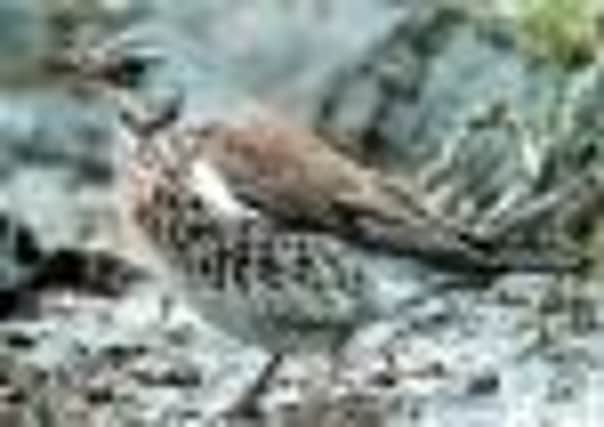Fieldfares swoop in low and gorge on jelly


They chattered among themselves as fieldfares do, their grey hoods like the steel helmets of medieval knights.
Always a joy to see these sociable thrushes around us.
The next day they were in Essex, according to my brother who lives at Great Tey. Robert was never so interested in birds in his youth as I was.
Advertisement
Hide AdAdvertisement
Hide AdHis Stewart Granger good looks made him a magnet for the girls but now he has quietened down and looks at the birds in the hedgerows instead.
So he rang me in some excitement to say that 200 fieldfares were in his garden around the paddock taking all the rowan berries off the bushes.
Good old Robert, he even noticed a grey wagtail passing along the stream as well as a great spotted woodpecker on the dead elm.
He will soon be reporting brent geese on the estuary when he gets his old sailing boat out of the mud for its yearly scratch.
Advertisement
Hide AdAdvertisement
Hide AdWithin a day or two the Swedish thrushes had got as far as Sussex. They found the old female yew tree at the bottom of my garden, the tree which well over a century ago was planted over the privy as was always the custom in Sussex.
Our ancestors had a thing about yew trees absorbing smells from the atmosphere before Airwick and other lavatory perfumes were invented.
The arrival of the fieldfares usually upset my resident mistle thrush which wanted all those juicy red arils for himself.
But I suspect mistle thrush numbers may have plummeted in recent times due to the attentions of peregrines and sparrowhawks so the fieldfares just gorged and gorged on the jelly from the yew.
Advertisement
Hide AdAdvertisement
Hide AdSoon they had moved onwards to all the other female yew trees along the downs, at Bepton, Didling, Harting and Kingley Vale.
They will feast like Romans, and make themselves sick, disgorging 30 berries at a go in the same way that owls cast pellets of bone and fur and rooks and seagulls cast pellets of corn husks and crab’s legs.
By mid December the bacchanal will be over and in January these fieldfares may well move south to France and Portugal where they will end up roasted in the local inn.
How sweet they will taste provided they are only cooked for 15 minutes or less, like grouse.
Advertisement
Hide AdAdvertisement
Hide AdIn my boyhood locals used to shoot fieldfares for the pot calling them “fulfars”. But that was before supermarkets and obesity; the idea of food rationing a quaint old thought from fantasy land of hobbits and dragons where grandpa lived.